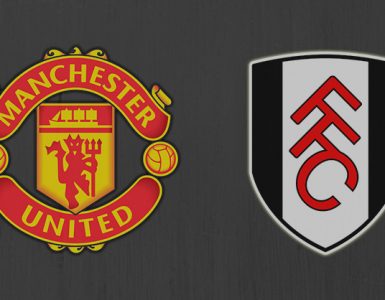The man who police say rammed his car into a security barrier at the U.S. Capitol on Friday and was fatally shot by police after emerging from the vehicle with a knife was a lifelong athlete who in recent months had shown growing support on social media for Louis Farrakhan and the extremist Nation of Islam group.
Noah Green, 25, was identified as the suspect in the attack that killed one U.S. Capitol Police officer and injured another, according to a law enforcement official briefed on the inquiry. Those who knew Green described him as quiet, athletic and non-violent but also told USA TODAY they were concerned about recent changes in his behavior.
Police say Green rammed a dark-colored sedan into a security barrier outside the U.S. Capitol, killing Officer William “Billy” Evans, an 18-year veteran of the U.S. Capitol Police Department. After the crash, police say, Green got out of the car with a knife in his hand, ran toward officers and ignored their commands. Officers opened fire and killed him.
D.C. Metropolitan Police Chief Robert J. Contee III said Green’s attack did not “appear to be terrorism-related.”
U.S. Capitol Police officers stand near a car that crashed into a barrier on Capitol Hill in Washington on Friday.
Contee said police are investigating to determine Green’s motive. He said Green was not known to either D.C. Police or the USCP and was not previously considered a threat to lawmakers.
More:Officer William Evans, killed in Friday’s attack at Capitol, described as ‘wonderful guy’
People who went to school with Green and played sports with him growing up described him as the average jock: athletic, popular, even working at a gym in college.
The violence on Friday, they say, was jarring compared to the person they knew, but Green’s recent social media activity seemed to offer clues that he’d changed.
Green was born in West Virginia but spent most of his life growing up in a sparsely populated area of Virginia with a large family, including nine siblings, USA TODAY learned through multiple interviews. He was athletic, playing basketball and football growing up.
He graduated from Christopher Newport University in 2019, where he played football as a defensive back, a spokesman for the school in Newport News, Virginia, told USA TODAY. On his biography page for the team, Green noted he was majoring in business and the “person in history he’d most like to meet is Malcolm X.”
Andre Toran, who was a captain on the football team at the time, said Green was a “really quiet guy” who would crack jokes every once in a while but usually just smiled instead of chiming in on conversations.
“I know people say this all the time, but the guy who I played with is not the same person who did this,” said Toran, a reporter at the Courier-Journal in Louisville, Kentucky, part of the USA TODAY Network.
Toran said while he moved away to attend graduate school in Chicago, Green’s mental state became an issue of concern among their friends.
Toran shared a Facebook post from Green during the COVID-19 pandemic in which Green accused his roommates of drugging him. Green wrote that he’d moved out but was suffering from withdrawals that included seizures and a lack of appetite, along with “paranoia” and “depression.” He wrote in the post that he was also experiencing “suicidal ideation.”
Get the Coronavirus Watch newsletter in your inbox.
Stay safe and informed with updates on the spread of the coronavirus
Delivery: Varies
Your Email
Green’s Facebook profile was taken down Friday after the Capitol attack.
More:Friday attack at the US Capitol expected to reignite the debate over security fencing erected after riot
Others who knew Green started to see a change in what he posted on Facebook, including support for the Nation of Islam, an anti-Semitic extremist group, as designated by the Southern Poverty Law Center, and its leader, Farrakhan.
The Southern Poverty Law Center describes the Nation of Islam as a hate group that aims to uplift African Americans but promotes anti-Semitic and racist theology.
KC Humphries, who attended CNU with Green, told USA TODAY they worked together at the school’s gym.
“He kind of came off as the average football athlete,” she said.
But, she added, she noticed the recent changes in his social media posts.
“They were very weird. It was posts about joining his church and ‘one day you’ll see’ kind of stuff,” Humphries said. “It was just a lot of weird, kind of cult stuff.”
On what appeared to be Green’s Facebook page, he posted last month about struggling over the last several years and his issues during the pandemic, including losing a job. He talked about his recent “spiritual journey.”
“To be honest, these past few years have been tough, and these past few months have been tougher,” one post said. “I have been tried with some of the biggest, unimaginable tests in my life. I am currently now unemployed, after I left my job, partly due to afflictions.”
The murder trial of Derek Chauvin is not the first time a Minneapolis police officer has gotten into trouble for using force on a handcuffed suspect.
In 2017, a Minneapolis cop was convicted of assault and sentenced to six months in the county workhouse after he shattered a suspect’s jaw with a kick during an arrest. The year before, two officers were caught on camera punching a handcuffed and apparently intoxicated man. In the latter case, both were fired but won their jobs back through arbitration.
The trend is not recent.
More than 23 years ago the city paid a nearly $54,000 settlement to a man after he was punched and kicked by an officer who later pleaded guilty to federal charges in the case.
A Star Tribune review of news reports and court records found at least 11 instances since 1995 of Minneapolis officers being accused of punching, kicking or otherwise assaulting people who were restrained. It is unknown how many actual instances occurred, since not every case may attract media attention or result in lawsuits or criminal charges.
While in several cases officers were fired, only two faced charges for their conduct before the Chauvin case.
RELATED
Read full coverage of the Derek Chauvin trial
Read full coverage of the Derek Chauvin trial
In the most recent case, a jury found Christopher Reiter guilty of third-degree assault four years ago for an incident in May 2016 in which he kicked a handcuffed suspect while responding to a domestic assault call. The kick knocked the man unconscious and caused a traumatic brain injury. Before sentencing him to six months in a county workhouse, the presiding judge told Reiter that he “abused his position of trust and committed a serious assault.”
In 1997, a one-time Minneapolis police officer, Anthony M. Barragan, was charged in federal court in the beating of a man arrested on suspicion of sexually assaulting an employee of the group home where the man was living. That suspect, too, was in restraints.
“Handcuffing is sort of the law of demarcation where it takes a whole lot of justification to use force after somebody’s handcuffed, and it better be proportional to what a person did after somebody’s handcuffed,” said St. Paul-based attorney Paul Applebaum, who represented the man assaulted by Reiter in a civil suit against the former officer and the city of Minneapolis. “A police officer better have a good reason if he dumps a handcuffed suspect on his head.”
Reiter was named in a lawsuit brought two years before that event by community activist Al Flowers, who accused police of excessive force after saying he was punched repeatedly and kicked by officers before being dragged out of his home — all while in handcuffs.
STAR TRIBUNE FILE
The booking mug for Al Flowers after he was arrested in 2014 following an altercation with police officers at his home.
In the Chauvin case, the since-fired officer is captured on bystander video pinning the handcuffed Floyd with his knee for 9 minutes and 29 seconds. Floyd’s death last May sparked widespread protests against police brutality and racial injustice nationwide.
On Friday, jurors in his trial heard from a longtime Minneapolis homicide detective, Lt. Richard Zimmerman, who testified that officers are taught it is their responsibility to safely transport a suspect to jail after an arrest.
He also testified that it was “totally unnecessary” for Chauvin to put his knee on a handcuffed George Floyd’s neck during Floyd’s arrest last spring — particularly after he stopped resisting. The remarks amounted to the strongest condemnation yet of Chauvin’s actions from a former colleague.
Zimmerman testified that once a suspect is handcuffed, the threat level “goes down all the way.”
Once the cuffs are on a suspect, Zimmerman said, “that person is yours. He is your responsibility. His safety is your responsibility. His well-being is your responsibility.”
Chauvin’s attorney countered by arguing that officers are not trained to automatically let their guard down after a suspect is in handcuffs, while pointing out that Zimmerman was not a use-of-force expert.
Robert Pusins, a 35-year law enforcement veteran in Florida, said that despite public perception, even with their hands bound suspects can still be combative and harm an officer.
“There are other assaultive behaviors that a handcuffed person can engage in, such as kicking, head-butting, knee strikes,” said Pusins, who has testified as a use-of-force expert in state and federal cases.
The exact cause of Floyd’s death while in police custody promises to be a central theme in the case against Chauvin, whose attorney has argued that Floyd died of a drug overdose and pre-existing health issues. The Hennepin County Medical Examiner’s Office ruled cardiac arrest as the cause of death, but Floyd’s family attorneys believe he died of asphyxiation from having Chauvin’s knee pressed on his neck.
In either case, MPD Chief Medaria Arradondo and other officials have said publicly that Chauvin’s conduct was not consistent with department training on subduing uncooperative people.
The department’s policy on use of force, last revised in July, bars officers from using physical force on restrained people, “except as objectively reasonable to prevent their escape or prevent imminent bodily injury to the individual, the officer, or another person.”
“In these situations, only the amount of force necessary to control the situation shall be used. Force used against a restrained or handcuffed individual shall be viewed with increased scrutiny in determining reasonableness,” the policy reads.
Longtime activist Dave Bicking said that he heard similar defenses when he served on the now-defunct Civilian Police Review Authority, but then as now he thought “it seems like an excuse, because the high-profile cases were of people who were in handcuffs and were not resisting.”
“Being in handcuffs is not an absolute bar to any use of force, but almost always it is. But there are plenty of cases where police officers want to punish someone afterward,” said Bicking, a member of Communities United Against Police Brutality.
“Oftentimes after there is adrenaline, use of force is more about punishment than it is about keeping control or bringing somebody under control,” he said.
But, he said, Farrakhan’s teaching had been a guiding path for him, calling the extremist leader “my spiritual father” and saying despite his path being thwarted, “Allah (God) has chosen me for other things.”
In other posts, Green shared speeches by Farrakhan and Elijah Muhammad, who previously led the Nation of Islam, and wrote about the end times.
“It was definitely surprising to see all this,” Humphries said of Green’s alleged involvement in Friday’s incident. “But, when I remembered the posts and connected the dots, it kind of adds up now.”
What we know:Capitol Police officer, suspect dead after driving into barrier.
More than 170,000 migrants were taken into custody at the Southwest border in March, the highest monthly total since at least 2006, according to U.S. Customs and Border Protection officials who have been briefed on the preliminary numbers but are not authorized to speak publicly.
The numbers are still being finalized and could change, the officials said. The number of migrants encountered at the border, including families as well as unaccompanied children and teenagers, has been increasing in recent months. In February, CBP reported more than 100,000 encounters.
2 Girls Dropped Over U.S. Border Wall To Be Reunited With Mother
NATIONAL
2 Girls Dropped Over U.S. Border Wall To Be Reunited With Mother
Biden Says ‘Nothing Has Changed’ But Child Migrants Crossing Border At Higher Pace
POLITICS
Biden Says ‘Nothing Has Changed’ But Child Migrants Crossing Border At Higher Pace
A CBP official also said Border Patrol agents have seen an increase in what they call “got aways,” or unauthorized immigrants who are detected crossing the border by surveillance cameras but who agents have not been able to apprehend.
The official, who was not authorized to speak publicly, said the number of “got aways” has risen to about 1,000 a day. Agents say they are being diverted from enforcement operations to process the rising number of migrants in custody.
Border Patrol facilities have been overwhelmed by the increase, and the Biden administration has been rushing to open new facilities to process the migrants. CBP announced Friday the opening of a 90,000-square-foot processing facility in Eagle Pass, Texas.
Article continues after sponsor message
Children and teenagers arriving without their parents are being allowed into the U.S. But many of the migrants are being turned back under Title 42, the health order implemented by the Trump administration aimed at limiting the spread of the coronavirus, and some of the increase in recent months includes migrants crossing more than once.
One of Green’s brothers told The Washington Post that Noah Green appeared to have mentally unraveled in the last several years. He abruptly moved from Virginia to Indiana and told his brother, Brendan, he was suffering from hallucinations, heart palpitations, headaches and suicidal thoughts. Brendan Green told the paper his brother informed him the drugs told him to move to Indianapolis.
In Indiana, Noah told his brother that people were attempting to break into his apartment. Brendan Green said he flew out to Indianapolis but didn’t see anything suspicious and told The Post that Noah’s “mind didn’t seem right.”
A few months ago, Noah Green moved to Botswana, his brother told the Post. The brothers kept in contact and at one point, Noah told Brendan that “his mind was telling him to basically commit suicide” and said he’d jumped in front of a car, Brendan told The Post. Several weeks ago, Brendan allowed Noah to come live with him after Noah said he was “in a really bad situation.”
Investigators on Friday were still digging into the suspect’s background and examining whether he had any history of mental health issues. They were also working to



























